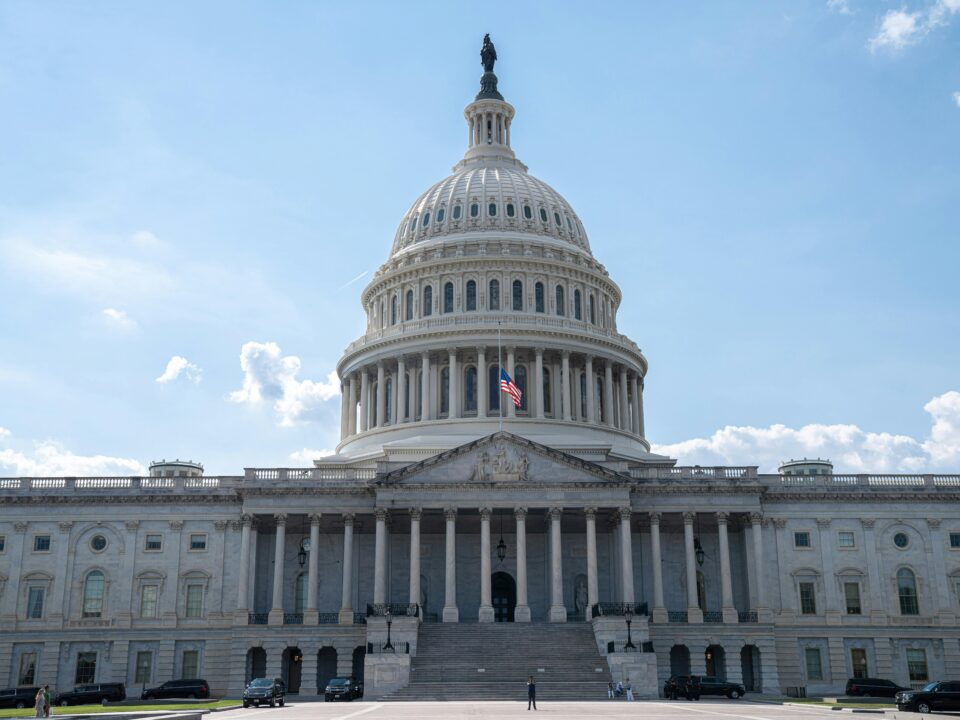
Vermont’s New Captive: Affiliated Reinsurance Companies

2018 Snow and Ice Management Association’s 5th Annual New Hampshire Salt Symposium
Big Captive Woes Cause Rethink
The State of Washington Insurance Commissioner recently issued a cease and desist order against an Arizona pure captive owned by Microsoft. The order alleges that the captive violated Washington law by failing to obtain a license to do business in the state, and by failing to pay substantial premium taxes. This has been big news in the captive insurance world, but – at least based on the facts as set out in the trade press – not any kind of surprise.
But Microsoft’s captive doesn’t appear to have used a fronting arrangement. To make matters worse, Washington is one of just a few states lacking other exceptions to licensure which might have applied, referred to as “direct procurement.” Essentially, the provisions available in most states recognize the ability of insureds to purchase insurance outside their home state, provided they pay premium tax on the transaction. Many captive owners pay the premium tax on coverages purchased from their captives, however, constitutional limits on a state’s ability to tax transactions outside their control make the amount of such tax somewhat uncertain.
Johnson & Johnson paid the direct procurement tax to New Jersey – its “home state”—on the premiums paid to its captive, but recently sought a refund of taxes paid on premiums for risks not located in New Jersey. A recent decision by the New Jersey tax court denied the refund claim and asserted the state’s right to collect premium tax on all coverages, regardless of where the underlying risks are located.
It remains too soon to tell whether Microsoft did anything wrong or whether New Jersey’s interpretation of its own authority to tax captive arrangements will hold up.It is possible that Washington lacks the authority to regulate the Microsoft captive’s activities on constitutional or other grounds and that New Jersey lacks the authority to tax transactions beyond its borders despite recent federal legislation considered in the Johnson & Johnson action. Also, outcomes for captives would vary significantly in different states. North Carolina has even recently exempted businesses there from having to pay premium tax on captive transactions.
With the new attention to these issues and resulting uncertainty, many captives are reconsidering their approach to regulatory compliance and this has already resulted in some program changes. Group programs which partner with reputable, regulated fronting partners and risk retention groups have nothing to fear from regulators and can watch this unfold from the sidelines. Insurance companies, including captives wherever they are organized, have to obtain an insurance license in every state in which they do business unless they fit certain limited exceptions. Because getting a license is a significant cost and administrative burden (literally feet of paper to be filed in some states), most captives do business by not ever writing insurance outside their state of domicile and instead “reinsure” (basically, insurance for insurers) a traditional, fully licensed insurer already spreading the costs of licensing over other parts of its business. These so-called “fronting” arrangements remove the burden of compliance from the captive because the reinsurance the captive provides the front fits one of the exceptions to licensure.
News From the Vermont State House: Are Vetoes and Extended Sessions the New Normal?
The Vermont General Assembly typically convenes every January for a sixteen to eighteen week session to consider and pass legislation reflecting the priorities and necessities of the day. Sure there are disagreements within the Legislature and with the Governor but they are usually hammered out in compromises clearing the way for an adjournment and time moves on. Not this year. Not last year.
We’ve now seen two consecutive years in which the session dragged on into late June. We’ve seen two consecutive years in which the budget that passed the Legislature was vetoed by the Governor. And this year, we’ve seen a record number of vetoes. Two years does not make a pattern, of course, but these are uncharted waters for Vermont and we don’t necessarily see a change in the near future unless there is a significant shakeup in the players or make-up of the General Assembly – neither of which is expected at this point.
For those interested in such things, the 2018 Regular Session of the General Assembly adjourned on May 12, but with the knowledge of all that it was only temporary, as the Legislature adjourned after passing a budget and tax bill but without agreement with Governor Scott on that FY19 budget and the property tax rates used to support K-12 education funding. The Governor called the Legislature back for a rare Special Session on May 23 to develop a new budget and tax bill because of vetoes over an increase in the property tax rates – something the Governor pledged he will not sign into law. After another attempt at a budget that was also vetoed and sustained, the third attempt was the eventual charm. While the final budget does contain an increase in the nonresidential property tax rate, the Governor expressed his disappointment by allowing the budget bill to go into effect without his signature on June 29, a mere day before the end of the State’s fiscal year.
The potential for a government shutdown on July 1 no doubt played a significant role in the political calculus for the Governor and his team. They likely felt a shutdown scenario and impact posed a greater risk than accepting the property tax increase. Legislative leadership also did an admirable job in running out the clock in the Special Session from May 23 to the eve of the fiscal year end and backing the Governor into a corner over his no tax increase pledge.
This issue will now spill over to the November elections. The Governor and Republicans will ask voters to increase their numbers in the General Assembly to provide more balance and a check on a Legislature that insists on increasing taxes even when unexpected millions in surplus come in. Democrats will ask voters to bolster their majorities to provide their own check – and maybe even a supermajority to override vetoes. The campaigns are well underway.
Far away from this political firestorm a number of other bills were addressed and passed into law, several of
which are of interest to the captive insurance community. As previously reported, a captive insurance bill was
quickly addressed and became law in March. H.694 was a consensus product of the Vermont Department of
Financial Regulation (“DFR”) and the captive industry, and represented largely a collection of technical
amendments to the captive laws, including:
- Allowing all captives, now including association and sponsored captives, to file their annual reports on March 15, or seventy-five days after year-end for fiscal year filers.
- At the same time, allowing captives to pay their premium taxes on March 15 to coincide with the annual reports.
- Clarifying that self-insurance portfolio transfers are excluded from the premium tax.
- Authorizing a branch captive to designate the Commissioner of DFR as its agent for service of process, and also remove the requirement that a branch captive obtain a certificate of general good from the Department as no Vermont corporation is formed.
- Further amending governance standards for risk retention groups to require annual certification of director independence.
The Governor signed H.694 into law on March 8 and its provisions became effective as of that date.
Elsewhere, blockchain, cryptocurrency and financial technology received considerable attention in the Legislature. Legislators are often looking for the “next captive insurance industry in Vermont” and some think blockchain holds that potential by positioning Vermont early in the development of products and facilitation of transactions.
In addition, the Department successfully sought an amendment to H.719 authorizing a new entity to be formed in Vermont: an affiliated reinsurer. (See our larger article below). This entity is a hybrid between a captive and traditional insurer. It amends the captive statute and offers an onshore affiliated reinsurance alternative to insurance companies affected by the recent imposition of the Base Erosion Anti-Abuse Tax on reinsurance ceded to offshore affiliates. The Vermont entity will pay a tax on premium as outlined in existing law for captive reinsurers. It is expected that these companies will qualify as multi-state companies and be subject to NAIC accreditation standards. The framework is now in place and time will tell if programs utilize this option.
We will continue to report on these and other captive insurance legislative and regulatory matters in future issues.
Association Health Plan Access Expanded but Immediate Captive Impact Doubtful
In response to President Trump’s October 12, 2017 Executive Order, the Department of Labor (“DOL”), on June 21, 2018, issued final regulations broadening access to Association Health Plans (“AHPs”). AHPs, in fact, are nothing new. Since the mid-1970s, many small employers have utilized AHPs in order to join together and purchase health insurance coverage. The benefit of this approach is that a larger pool of covered lives can provide increased purchasing power and lower premiums to the AHP’s employer members. The downside is that in order to ensure AHPs remain financially stable and provide quality coverage, they are required to comply with significant federal and state regulatory oversight.
Under the Affordable Care Act (“ACA”), all small employers and self-employed individuals are required to purchase coverage through the ACA-compliant small-group or individual markets. The Trump Administration’s renewed focus on AHPs is part of an effort to expand the ability of small employers and the self-employed to access lower-cost large-group or self-insured health plans. Under the former AHP rule, an AHP was required to have a principal business purpose other than insurance, the AHP coverage was required to comply with small-group market regulations if the AHP members were small enough that each would qualify as a small-group on its own, and an AHP could only be formed by employers sharing a common line of business. The new AHP rule significantly broadens these limitations. Now, an AHP’s principal business can be insurance so long as it has at least one other “substantial” business purpose, the association is able to use its combined enrollment to qualify for coverage compliant with large-group market regulations, employers from a single state or metropolitan area can form an AHP without having to share a common line of business and, for the first time, self-employed individuals are permitted to join AHPs.
Many of Primmer’s clients operating group medical stop loss captives have enquired as to whether passage of the new AHP rule would trigger additional interest and growth in group captive solutions. Unfortunately, while the new rule succeeds in making AHP formation and access to large-group coverage easier, it fails to address the equally problematic hurdle of over-burdensome regulation. Under current law, AHPs are considered to be multiple employer welfare associations (“MEWAs”). MEWAs are subject to regulation under federal ERISA law as well as by the insurance laws of each state in which they operate. As a result, AHPs face a complex and costly web of regulatory compliance obligations that can significantly undermine efficiencies and savings they might gain from accessing the large-group/self-insured market.
While the new AHP rule should be considered progress in that it signals a growing willingness on the part of the federal government to encourage alternative solutions aimed at lowering the cost of health coverage, AHPs are unlikely to represent a substantial new opportunity in the medical stop loss captive space until further significant changes aimed at streamlining the current burden of complying with the dual federal/state regulatory scheme are accomplished.
Reserve Mechanical and the Future of Small Captives
On June 18, 2018, the United States Tax Court decided Reserve Mechanical Corp. v. CIR (T.C. Memo. 2018-86), a case involving a small Anguillan captive purportedly tax-exempt under section 501(c)(15) of the Internal Revenue Code. Although section 501(c)(15) captives differ from section 831(b) captives in a number of ways, including a much lower gross receipts limitation of $600,000 per year, they are similar to 831(b)’s in that they are “microcaptives” and often utilized by closely-held businesses to produce favorable income tax results. With the Reserve decision, it has become evident that like 831(b)’s, 501(c)(15) captives are now the subject of scrutiny by the IRS and disfavored by the U.S. Tax Court.
In a decision that repeatedly cited the Avrahami decision, which signaled the demise of 831(b)’s used as tax-avoidance schemes, Judge Kerrigan found that the Reserve captive was not a true insurance company for Federal income tax purposes, was therefore not eligible for the exemption under section 501(c)(15), and premium deductions previously taken by the captive’s affiliated insureds were disallowed. In so holding, Judge Kerrigan discussed all of the traditional factors courts consider when determining whether a captive qualifies as an insurance company – true insurance risk, risk distribution, risk shifting, business purpose, and insurance in its commonly accepted sense. The court also examined the risk pool at issue, Pool Re, in a typical manner, analyzing whether it was a “bona fide insurance company” and, in particular, whether the reinsurance pool involved a circular flow of funds. However, the opinion also seemed to weigh heavily other factors that most in the insurance industry would consider to be irrelevant – such as the likelihood of recurrence of a loss,and whether the insurance policy documents were “cookie cutter.” Id. at pp. 44, 54.
Perhaps what is most evident from the opinion is that courts are now unlikely to find adequate risk distribution in cases where a captive’s insurance operations are small. Citing Avrahami, the court stated that “[i]n past cases we have focused on both the number of insureds and the total number of independent risk exposures to determine whether an insurer distributed risk.” Avrahami, 149 TC 64. The court then went on to compare the number of exposure units involved in the taxpayer-favorable Rent-a-Center and Securitas cases, which were in the hundreds of thousands, to the exposure units involved in the Reserve arrangement, which consisted of two facilities in Osburn, 17 employees and 12 mines.
So the takeaway from Reserve appears to be that for an arrangement to be considered insurance for tax purposes, it must be large. As comforting as this may be to mid-size and larger captives, they should not be tempted to ignore the traditional factors that courts consider in determining whether an arrangement constitutes insurance. Ultimately, Judge Kerrigan’s holding was based upon that fact that the Reserve captive’s transactions were not “insurance transactions in the commonly accepted sense.” Reserve at 62.
LRRA Preempts Georgia’s Direct Action Statute
On May 7, 2018, the Supreme Court of Georgia (“SCOG”) issued its opinion in the Reis v. OOIDA Risk Retention Group, Inc. case finding that the Liability Risk Retention Act (“LRRA”) preempted Georgia’s direct action statute. Frequently citing to the Wadsworth v. Allied Professional Ins. Co. case, the Court agreed with other courts that the LRRA has a “broad preemptive effect” to serve its “clear goal . . . to streamline the operations of risk retention groups . . . by subjecting them to consistent regulation by their chartering state.” Therefore, OODIA would not be subject to Georgia’s direct action statute because to do so would be to disregard Congress’s command that foreign risk retention groups are not subject to state laws governing the insurance business other than that of its domicile.
The Reis case concerns a motor vehicle accident where the plaintiffs were occupants of a car involved in a collision with a semi-truck insured by OOIDA. Plaintiffs filed suit against the truck’s owner, driver, and OOIDA as the insurer under Georgia’s direct action statute. OOIDA moved for summary judgement asserting that the LRRA preempted the Georgia statute since OODIA was not domiciled in Georgia and should not be subject to the suit. Summary judgement was granted in favor of OODIA by the superior court which concluded that there was federal preemption of Georgia’s statutes and there was no cause of action against OODIA.
On appeal, the SCOG conducted a review of federal preemption, the history of the LRRA, and the LRRA’s statutory scheme. The Court noted that insurance is an area traditionally regulated by the states but federal law may still preempt if that was “Congress’s clear and manifest purpose.” The Court essentially adopted whole-cloth the Wadsworth explanation of the LRRA’s tripartite statutory scheme. This scheme consists first of preemption at the federal level of any attempt by a state to make unlawful or directly or indirectly regulate the operation of a risk retention group (“RRG”). Second, the LRRA provides for the domiciliary or chartering state to regulate the formation and operation of RRGs. Third, the LRRA reserves specifically enumerated powers to the non-domiciliary states including certain financial responsibility requirements.
In Reis, plaintiffs argued that Georgia’s direct action statute was a financial responsibility law rather than a regulation on the operations of RRGs. The Court rejected plaintiffs’ argument using Wadsworth, noting that both concerned the application of direct action statutes to RRGs. The Court agreed with Wadsworth’s conclusion that “application of the direct action statute would undoubtedly regulate, directly or indirectly those groups by subjecting them to lawsuits filed in other states by claimants who are not parties to the contracts with the insureds.”
The Court provided further analysis on whether a direct action statute regulated the operation of the “business of insurance” by considering three characteristics of insurance: (i) “whether the practice effectively transfers or spreads a proxyholder’s risk; (ii) whether it is an integral part of the contractual relationship between the insurer and the insured, and; (iii) whether the practice is limited to entities within the insurance industry.” The Court found that application of direct action statutes would impact insurance operations by increasing costs associated with the defense of unanticipated lawsuits as a named party, affected the relationship with policyholders by creating possible conflicts of interest between the insurer and the insured, and by limiting the statutes application to motor vehicle carriers. After finding that the direct action statutes both directly and indirectly regulated the operation of motor vehicle carriers, the Court concluded that such regulation may be permissible with traditional carriers but is preempted by the LRRA.
Consistent with a number of other courts, the SCOG came to the same conclusion that Congress intended the LRRA to broadly exempt RRGs “from state law requirements that make it difficult for risk retention groups to form or to operate on a multi-state basis.” In doing so, the SCOG has provided another affirmation of the expansive preemptive power of the LRRA.
Vermont’s New Captive: Affiliated Reinsurance Companies
With an eye toward creating a domestic alternative to offshore reinsurance affiliates, the Vermont Legislature recently passed legislation establishing a new type of captive, an affiliated reinsurance company (“ARC”), effective July 1, 2018. An ARC will be permitted to reinsure the risks of a ceding insurer that is its parent or affiliate as well as cede those assumed risks to another reinsurer or reinsurers. The ARC structure provides an alternative to offshore vehicles, such as a Bermuda affiliated reinsurer, for U.S. companies that are currently reinsuring offshore and may now be subject to the Base Erosion and Anti-Abuse Tax (“BEAT”). Importantly, the ARC statute is drafted so as to meet the National Association of Insurance Commissioners (“NAIC”) accreditation standards. The resulting structure provides the benefits of a traditional reinsurer that will be taxed as a captive and regulated by Vermont’s Captive Insurance Division.
This new captive form positions Vermont as a strong option for companies that are seeking ways to continue to reinsure business without the negative implications related to recent federal tax reforms. Companies with large U.S. operations that utilize offshore reinsurance companies are now subject to BEAT for reinsurance premiums paid by U.S. companies to non-U.S. affiliates where those premium payments lower the U.S. company’s taxable income below certain limits. BEAT was included in the well-publicized Tax Cuts and Jobs Act enacted on December 20, 2017, and is aimed at limiting U.S. tax-base erosion by creating an additional tax liability on certain corporations. BEAT generally applies to corporate groups with three year average annual gross receipts over $500 million and base erosion tax benefits of at least 3%. BEAT generally sets a minimum tax rate of 5% in 2018, increasing to 10% in 2019 and 12.5% in 2026. While not explicitly stated, BEAT is likely to be considered in addition to the existing 1% reinsurance excise tax.
House Bill 719 establishes a new subchapter in the Vermont Captive Insurance Law specific to ARCs. The language generally tracks the existing language for Special Purpose Financial Insurance Companies with modifications to reflect the business needs of the new structure and to comply with NAIC accreditation standards. Key provisions include a $5 million minimum capital and surplus requirement; a limitation to only reinsuring risks ceded by its parent or affiliate pursuant to a reinsurance contract; prohibiting direct or assumed risks or indemnification other than through an approved reinsurance contract; and the ability of the ARC to cede assumed risks to other reinsurers. Ceding insurers are defined as insurance companies approved by the Commissioner and licensed to do business as insurers or reinsurers in its domicile which cede risk to ARCs through a reinsurance contract.
ARCs will be subject to regulation by the Vermont Department of Financial Regulation (“DFR”) similar to existing captive insurance companies, including Vermont resident director and meeting requirements. Additionally, ARCs will be subject to oversight in areas required by NAIC accreditation standards, including solvency, holding company regulation, and the use of statutory accounting principles. In keeping with Vermont’s reputation for thoughtful regulation, the new law provides DFR additional discretion to consider investment policies on their own merits without mandating compliance with strict diversification limits found in traditional insurance statutes. Investment policies must remain consistent with the NAIC accreditation requirements for diversity of type and issue, however, ARCs and DFR will now have more flexibility in creating investment policies that are tailored to the individual companies. This hybrid of traditional insurance and captive insurance regulation will be implemented by the Captive Insurance Division.
Vermont’s establishment of ARCs will allow the formation of reinsurance affiliates onshore, thereby avoiding the minimum tax calculation of BEAT. By building on its experience with traditional captives and special purpose financial insurance companies, Vermont’s new option provides the flexibility found in captive regulation with recognition that comes to companies complying with traditional insurance company accreditation standards.
If you have questions or seek additional information, please contact us.




